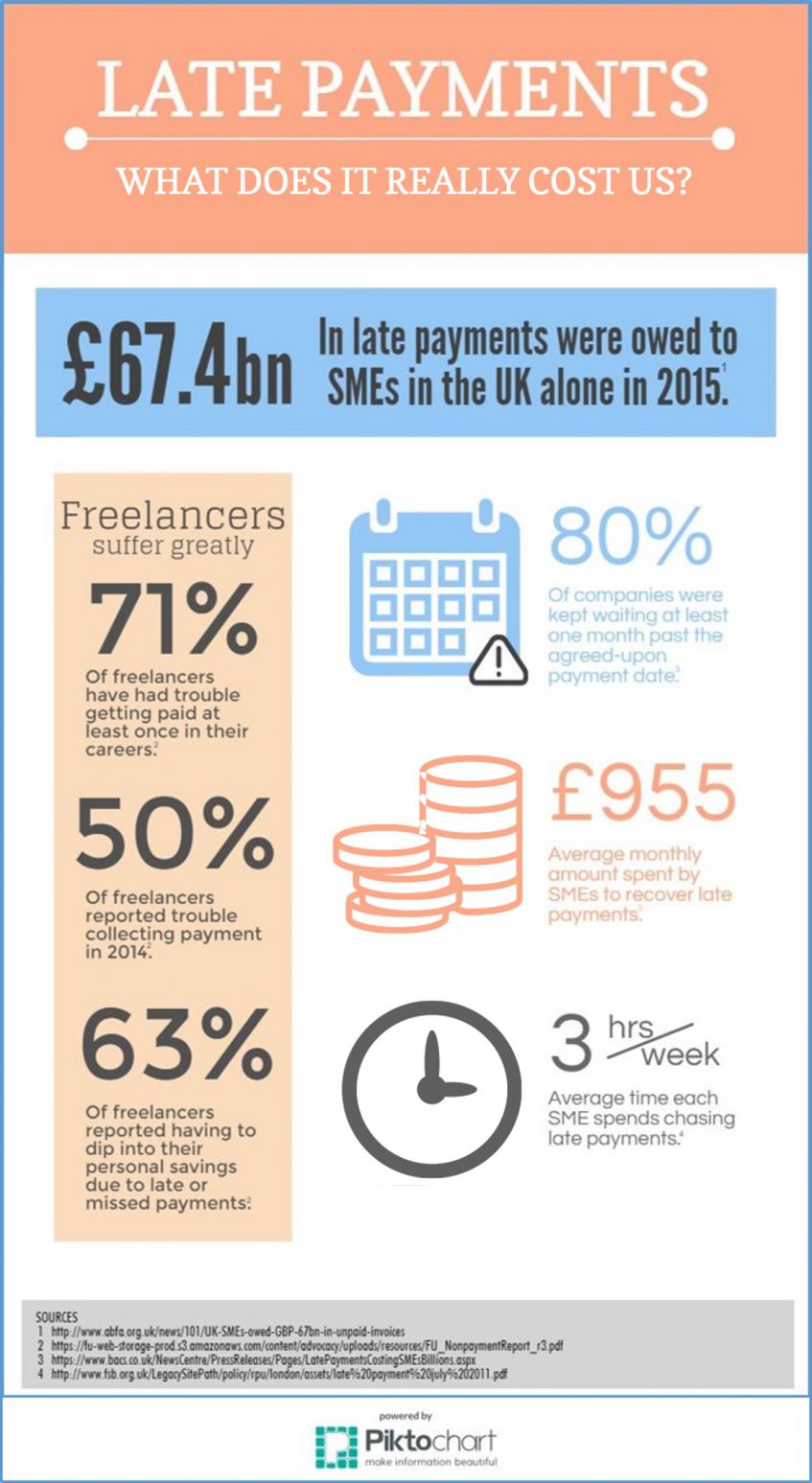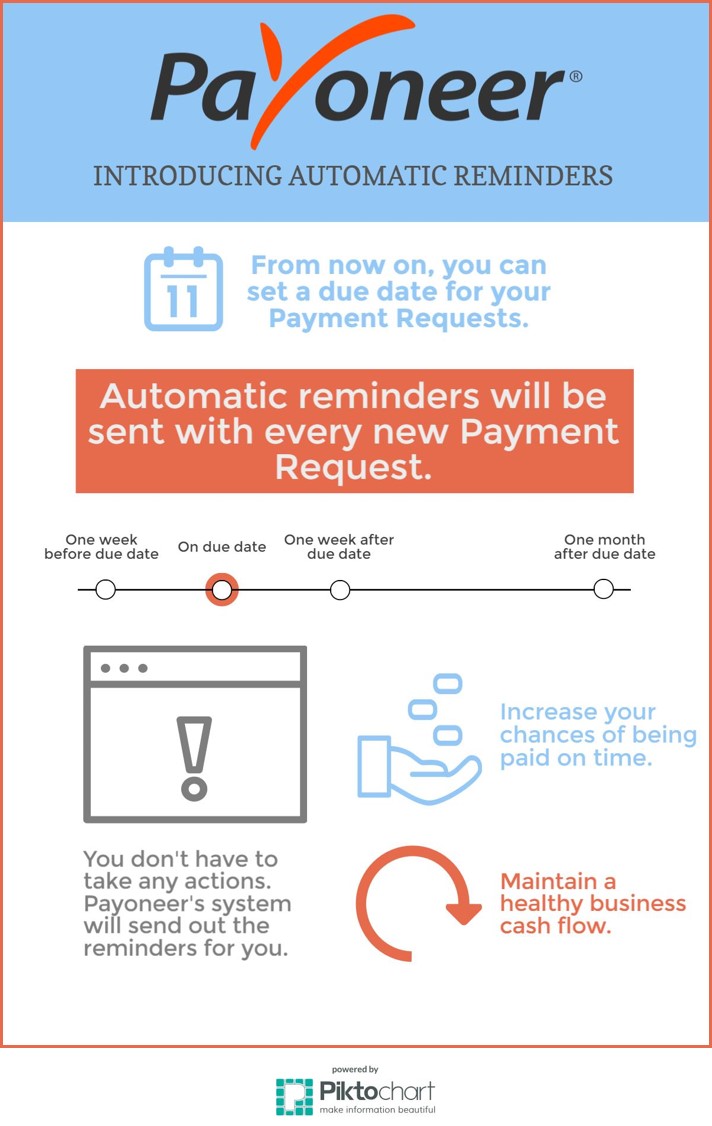
Late Payments: How to Fight Them Effectively
If you run your own business, chances are you’ve had to chase down an overdue invoice at least once. The US Freelancers Union reports that 50% of freelancers encountered difficulties receiving payments from clients in 2014, with 81% of those cases being late payments. Failing to pay in a timely manner appears to be a widespread epidemic, affecting businesses all around the globe. In the UK, for example, SMEs were owed over £67.4bn in late payments in 2015.
Late payments directly affect the business’s well-being
Aside from being a downright nuisance, late payments can cause serious damage to the healthy functionality of your business. Money is oxygen to a business owner; without it cash flow comes to a halt.
- Invested time and money. Once you’ve sent out an invoice, you’ve already spent a fair amount of time and money working on the project. Chasing down clients is not only a huge hassle, it requires more of these precious resources.
- Outgoing payments are thwarted. If you’ve collaborated with other businesses or freelancers, they need to be paid as well. You might end up having to pay them out-of-pocket if your client fails to pay on time. Furthermore, there are suppliers, rent and utilities to pay. While you might be somewhat understanding of a late-paying client, your utility and credit card companies likely won’t be as lenient towards you.
- Stumping growth. It can be hard to move forward with your business if money is holding you back. Hiring new employees, purchasing new equipment or technology can only happen when you have a healthy cash flow.
- The smaller the business, the harder the blow. SMEs don’t have large cash pillows to rely on. If you’re a small business owner, getting paid is particularly crucial to keeping your business afloat.


Examples from the UK and US of how devastating late payments can be to SMEs.
What can you do to prevent late payments?
- Clarify your expectations in advance. Just as your clients expect the work to be done by a certain time, it is absolutely acceptable to expect your money to arrive on time. State the expected payment due date in the contract, in an email, or somewhere in writing, in a clear and visible location.
- Make sure there are no issues on your end. Is the client happy with the work? Is he waiting on an updated version? Tackle issues and miscommunication that could prevent the client from paying in a timely manner.
- Trust your instincts about questionable clients. There are many legitimate reasons why a client may be late to pay you. But sometimes, unfortunately, you may encounter problematic clients. If you have a nagging feeling that something isn’t right about the client’s reliability (e.g. poor reviews from other freelancers or no presence on search engines and social media), it might be best to avoid working with them in the first place.
Payoneer’s payment reminders are an easy and effective solution
A tool that is exceptionally effective in minimizing late payments is simply reminding the client that payment is due. It’s really as straightforward as it sounds; an email to your client around the due date and on the day itself can boost the chances of a timely payment.
In March of this year, Payoneer launched a Manual Reminder feature that allows users to gently remind clients about due payment. Since the feature’s launch, users have seen immense success in receiving payments from clients after Manual Reminders were sent.
Many users don’t feel comfortable sending too many reminders to their clients. Getting paid on time is important, but you don’t want to create tension with your client in the process. Payoneer’s reminders solve this problem, as the email is sent from Payoneer and not from you.


Payoneer’s new Automatic Reminders feature will help prevent and deal with late paying clients, without any hassle on your part. With every new Payment Request created, 4 scheduled e-mail reminders will be sent to clients to make sure payment isn’t delayed. We won’t aggravate your clients; as soon as the payment is made, they will not receive any additional reminders.
To find out more about how to use this feature, visit our tutorial page.




